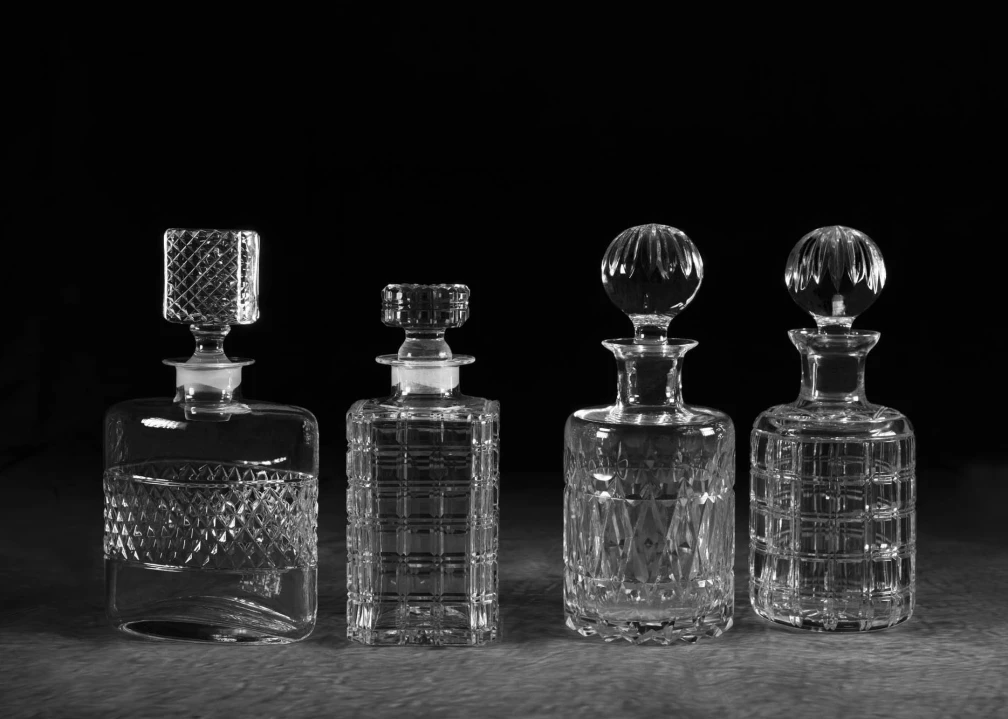Since the Renaissance glass production of drinking glasses was very active in Florence. There were many glass shops that included a number of different styles made specifically according to the use, for example “glasses for the sick”. From the 16th century, to enrich their prestigious collections, the Medici Grand Dukes brought in Venetian masters, that inspired Florentine glass making with new patterns and colours clearly from Murano.
Uniquely Florentine, however, was glass processing to make items for experimental and scientific use, in the wake of the studies of the scientist Galileo Galilei. He had glass alembic stills and thermometers made that are still kept in the windows of the Museum of Science.
The 19th century also saw the production of glass for flasks and flagons for different uses. The area of Empoli supplied Florence with most of its green glass; that for “Chianti use” had the straw arranged vertically whereas the straw was arranged horizontally for “Montecatini use”, for bottling the spa water.In the 1820s, the Crystal Factory of Colle Val d'Elsa was founded, producing etched white glass items in the tradition of Bohemian crystal.
The twentieth century marked the great development of Tuscan glassworks. In 1963 the master glassmaker Ubaldo Pacini, from the Boschi works (historical glassworks founded in 1921 in Colle Val d'Elsa) devised the formula of modern crystal.
The invention of the modern formula for crystal was the driving force that promoted and encouraged the continuation of the activity. Today Tuscany still has an important tradition of glassmaking. It is also worth mentioning the restoration work of glass, windows, mirrors and stained glass that is still going on in some important crystal factories the city.
The product
The crystal glass (or just crystal) is a glass with the addition of up to 35% lead with a hard, shiny appearance. Adding potassium results in Bohemian crystal; used for art objects. In 1969 the European Union dictated its own rules on crystal: it can only be called crystal if it is glass with a minimum content of 24% lead oxide.
The production
The production of crystal is not only a complex chemical process perfected through trials implemented by master glassmakers over the centuries, but this product also has its origins in the tradition and the secrets of master craftsmen. The secret to creating high quality crystal is the purity of the raw materials used and the great care in mixing resulting in a mixture that is as homogeneous as possible.
The first step in the preparation of the glass paste is weighing the raw materials introduced into the hopper and then passed into the mixer where they are blended. The glass paste is mainly composed for sand with a low iron content and a homogeneous and fine consistency. The presence of red lead (lead oxide) in the glass paste increases the density of the crystal and hence the refractive index, giving the effect of greater brilliance. The lead oxide also makes the crystal more plastic and elastic with respect to the glass that is more unstable and harder to work.
Coloring is often added to the glass paste mixture. Once prepared the mixture is loaded into the furnaces in order to transformation it from a solid to a liquid. The mixture is slowly brought to the boil until it reaches the melting point which for crystal is 1550° C. During this melting process, the mass releases water and carbon dioxide or sulphur, assuming a homogeneous appearance. The bubbles of gas that might constitute manufacturing defects are then removed from the mass.
Glass-blowing the crystal is carried out by a group of glassmakers with different tasks and variable number depending on the type of work to be done. The extremely hot bolus is picked up and marbled and once the desired weight is obtained, the master blower blows the first time to give the item its chosen shape. Finally the item is detached from the pipe and the finished piece is taken to the tempering furnace. Once the item is finished, the crystal is subjected to further processing steps and decoration the result of artistic experimentation.
Something curious
The etymology of the word crystal comes from the greek“ krustaloò ”, i.e. freezing water. In fact one of the many legends has it that crystal is ice that has been cooled to such a point that it can no longer be melted. Rock crystal, symbol of purity was reverse carved to highlight the transparency of the natural reflections. For centuries glassmakers have tried to recreate in their workshops a material that could equal rock crystal.
By Camera di Commercio di Firenze with Unioncamere




